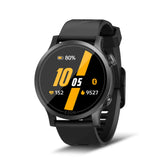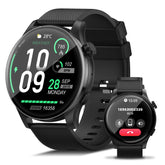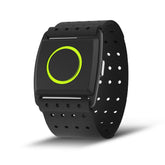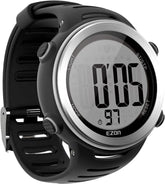Half Marathon Training Guide: Tips for Improving VO2 Max
Preparing for a half marathon requires more than just logging miles—it’s about optimizing your body’s ability to use oxygen efficiently, a key factor influenced by your VO2 max. This metric, measuring the maximum amount of oxygen your body can utilize during intense exercise, is a cornerstone of endurance performance. In this half marathon training guide, we’ll explore how to boost your VO2 max and craft a plan that enhances both your stamina and speed.
Understanding VO2 Max and Its Role in Half Marathon Performance
Your VO2 max (or maximal oxygen uptake) reflects your cardiovascular fitness and aerobic capacity. A higher VO2 max means your body can deliver more oxygen to working muscles, delaying fatigue and improving endurance—critical for conquering 13.1 miles. While genetics play a role, targeted training can significantly improve this metric, even for experienced runners.
Building a Foundation: The Basics of Half Marathon Training
A successful half marathon training guide starts with a structured plan that balances volume, intensity, and recovery:
1. Base Building (Weeks 1–4)
Focus on easy runs at a comfortable pace (60–70% of your maximum heart rate) to build an aerobic foundation. Aim for 3–4 runs per week, including one longer run (e.g., 6–8 miles) to improve endurance without overtaxing your body.
2. Intensity Training (Weeks 5–8)
Incorporate interval sessions like tempo runs or fartleks to challenge your cardiovascular system. For example, run 1-mile intervals at 80–85% of your max effort, followed by 2 minutes of recovery jogging. These sessions push your body to adapt to higher oxygen demands, directly boosting VO2 max.
3. Peak Training (Weeks 9–12)
Increase your long run distance to 10–12 miles while maintaining one day of high-intensity work (e.g., 8x400m sprints at near-max speed with full recovery). This combination of endurance and speed work helps your body utilize oxygen more efficiently at race pace.
4. Taper (Weeks 13–14)
Reduce mileage by 20–30% to allow for recovery, ensuring you’re fresh and ready to perform on race day.
Key Strategies to Improve Your VO2 Max
1. High-Intensity Interval Training (HIIT)
Short, all-out efforts (e.g., 30-second sprints) followed by active recovery (90-second jogs) force your heart and lungs to work at near-max capacity. Aim for 4–6 sessions of 8–10 intervals weekly. Research shows these workouts can significantly increase VO2 max in as little as 4–6 weeks when paired with a heart rate monitor to track intensity.
2. Tempo Runs
Run at a “comfortably hard” pace (around 75–80% of your max heart rate) for 20–30 minutes. This improves your lactate threshold, allowing you to sustain faster paces without fatigue—an essential skill for maintaining speed during the latter half of a half marathon. Use a heart rate watch to ensure you stay within your target zone.
3. Altitude Training (or Simulation)
If you can’t train at high altitudes, use a treadmill or indoor trainer to increase incline, mimicking the oxygen deficit of elevation. This forces your body to work harder to deliver oxygen, stimulating adaptations that enhance VO2 max.
4. Consistent Recovery
Don’t overlook rest days! Overtraining can stall progress. Use active recovery like yoga or walking, and monitor your resting heart rate—a drop in resting rate is a sign of improving fitness and increased oxygen efficiency.
Integrating VO2 Max Training into Your Half Marathon Plan
Here’s how to blend these strategies into a cohesive routine:
-
Weekly Structure:
- Monday: Easy run (Zone 2, 60–70% HR)
- Wednesday: HIIT session (Zone 4–5, 80–100% HR), tracked with a GPS-enabled sports watch to measure pace and distance
- Friday: Tempo run (Zone 3, 70–80% HR)
- Sunday: Long run (Zone 2, focusing on distance and fueling practice), using a GPS tracker to map your route and monitor progress
Adjust intensity based on your current fitness level, ensuring each workout aligns with your goal to improve VO2 max.
Gear to Enhance Your Training and VO2 Max Goals
Investing in the right tools can elevate your training precision:
- A Heart Rate Monitor: The EZON heart rate watch series provides real-time ECG-based tracking, helping you stay within target intensity zones during HIIT and tempo sessions.
- A GPS Sports Watch: The EZON GPS tracker watch maps your routes, measures pace, and calculates elevation gain, essential for structuring interval and hill workouts.
- Performance Apparel: Lightweight, breathable gear supports circulation and reduces muscle fatigue during long runs and intense intervals.
Staying Consistent and Motivated
Training for a half marathon—and improving your VO2 max—requires patience and discipline. Set incremental goals (e.g., “Complete a 30-minute tempo run at 7:30/mile”) and celebrate small wins. Track your progress with a training log or app, noting how your body adapts to higher intensities over time.
Race Day Prep: Putting Your VO2 Max to Work
On race day, start conservatively to avoid burning out early. Use your GPS watch to maintain a steady pace, and rely on your heart rate data to ensure you’re not exceeding your sustainable threshold. As you approach the finish, trust the adaptations from your VO2 max training to carry you through the final miles strong.
Ready to Elevate Your Performance?
Improving your VO2 max is a surefire way to boost your half marathon performance, whether you’re chasing a half marathon record or aiming for a personal best. With a strategic training plan, targeted intensity work, and the right tools like EZON’s sports watches, you’ll unlock your body’s full aerobic potential.
Start incorporating these tips into your routine today, and let every run bring you closer to crossing that finish line with confidence.









